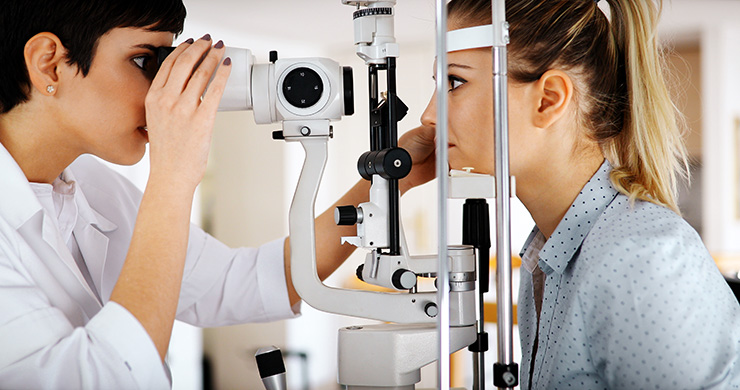Locate a Trusted Optometrist Chino for Family Eye Care Solutions
Locate a Trusted Optometrist Chino for Family Eye Care Solutions
Blog Article
Checking Out the Latest Technical Improvements in Optometry and What They Mean for Optometrists
In the ever-evolving area of optometry, current technological innovations are improving exactly how professionals approach eye treatment. From the precision of Optical Comprehensibility Tomography to the nuanced insights provided by AI-driven analysis devices, these technologies are setting brand-new requirements in person analysis and treatment. Teleoptometry is poised to redefine availability, guaranteeing that competence transcends geographical limitations. As these developments penetrate the practice, optometrists are encountered with the difficulty of welcoming these devices to enhance patient outcomes. Yet, the question continues to be: how will these technical shifts redefine the functions and obligations within the occupation?
Developments in Diagnostic Tools
Advancing the field of optometry, technologies in diagnostic devices have actually changed the way eye treatment experts examine and identify eye problems and aesthetic disabilities. The previous years has actually experienced substantial technological innovations, making it possible for more thorough and precise examinations. Optical Coherence Tomography (OCT), for instance, provides high-resolution cross-sectional pictures of the retina, permitting the early discovery of diseases such as glaucoma and age-related macular deterioration. This non-invasive imaging technique has become essential in contemporary optometric practice.
One more secret development is the introduction of innovative corneal topography systems, which map the surface area curvature of the cornea with accuracy. These tools are particularly beneficial for fitting get in touch with lenses and detecting corneal conditions. In addition, electronic retinal imaging has actually changed traditional ophthalmoscopy, providing detailed, scenic sights of the retina that promote thorough visual exams.
The development of wavefront aberrometry has actually also been crucial, allowing the evaluation of refractive mistakes with unrivaled precision (Optometrist Chino). This modern technology helps in customizing rehabilitative lenses and enhancing medical results for refractive surgical procedures. Collectively, these diagnostic developments encourage eye doctors to supply superior individual treatment, ensuring early intervention and customized treatment methods, inevitably improving visual health end results
AI in Patient Monitoring
Building on the foundation of cutting-edge analysis tools, the incorporation of artificial knowledge (AI) in client management represents a transformative jump for optometry. AI systems are significantly utilized to improve performance, precision, and customization in client treatment.
In addition, AI-driven systems promote structured individual communications and administrative processes. Automated scheduling, virtual consultations, and individualized follow-up plans not only enhance person complete satisfaction but also optimize time administration for professionals. These systems can triage patients based upon the seriousness of their conditions, making certain that those in critical requirement get punctual attention.
Additionally, AI improves decision-making by supplying eye doctors with evidence-based referrals and therapy paths. By integrating data from digital health and wellness records, AI devices offer insights that inform medical choices, minimizing the risk of mistakes and enhancing client end results. As AI remains to progress, its role in individual administration will likely increase, improving the landscape of optometric care.
Advances in Retinal Imaging
In the world of optometry, retinal imaging has experienced exceptional technical advancements that are enhancing diagnostic capabilities and client treatment. Developments such as Optical Comprehensibility Tomography (OCT) and fundus photography have reinvented just how eye doctors examine the retina and imagine.
Improved imaging methods like OCT angiography are further refining diagnostic accuracy. This non-invasive strategy maps blood circulation in the retina, using crucial insights into vascular health and wellness without the need for dye shots. Additionally, flexible optics innovation is being integrated into retinal imaging systems to correct eye aberrations, supplying extraordinary photo clarity. Such innovations promote the identification of min retinal changes that might indicate illness development.
Furthermore, developments in expert system are enhancing retinal imaging by making it possible for automated analysis of large datasets. These systems aid eye doctors in recognizing patterns a measure of pathology, consequently improving diagnostic precision and effectiveness. Jointly, these developments are transforming retinal imaging right into a foundation of modern eye care, enhancing outcomes and broadening therapeutic opportunities.
Teleoptometry's Expanding Duty
Teleoptometry anonymous is progressively becoming an essential component of eye care, driven by improvements in digital interaction and analysis devices. As optometry accepts electronic transformation, teleoptometry helps with remote consultations, allowing eye doctors to expand their services beyond standard borders. This is specifically useful in rural and underserved locations where accessibility to specialized eye treatment is usually minimal. By leveraging high-resolution video conferencing and progressed retinal imaging, eye doctors can conduct thorough eye tests from afar, making sure timely medical diagnosis and therapy.
The assimilation of fabricated knowledge (AI) more improves teleoptometry, enabling the evaluation of aesthetic information and assisting in the detection of ocular conditions such as glaucoma and diabetic person retinopathy. AI-powered formulas can quickly interpret intricate imaging data, supplying eye doctors with important understandings that bolster professional decision-making.
In addition, teleoptometry supports connection of treatment through smooth combination with digital health and wellness documents (EHRs), permitting optometrists to maintain detailed individual histories. This ensures that people get tailored and consistent care also when talking to different experts.
Regardless of these benefits, difficulties continue to be, including making certain information security and handling patient assumptions. Teleoptometry represents a substantial stride in the direction of more accessible, effective, and patient-centered eye care. As modern technology advances, its duty is positioned to broaden further.

Future Patterns in Eye Care
A myriad of ingenious fads is set to reshape the future of eye treatment, driven by technological advancements and the progressing demands of people. One considerable pattern is the integration of expert system (AI) in diagnostics, which guarantees to enhance the accuracy and performance of eye exams. AI formulas can analyze substantial quantities of information from retinal photos, potentially detecting conditions like diabetic person retinopathy and glaucoma earlier than standard approaches.
Additionally, customized medication is acquiring grip in optometry, with genetic screening informing tailored therapy plans. This approach aims to maximize client end results by tailoring treatments to private hereditary accounts. Wearable technology, such as smart call lenses, is additionally coming up, supplying real-time tracking of intraocular pressure or sugar levels, thus offering continual insights into systemic and ocular wellness.
The adoption of increased reality (AR) and digital fact (VR) in training and client education is an additional arising pattern. These modern technologies use immersive experiences that can enhance understanding and abilities both for eye doctors and clients. As these patterns progress, optometrists must remain abreast of technical advancements to give sophisticated care, making sure improved patient end results and complete satisfaction in the dynamic landscape of eye care.
Verdict

Collectively, these diagnostic developments encourage eye doctors to provide remarkable client care, making certain very early intervention and customized treatment strategies, ultimately improving aesthetic wellness outcomes.

As these modern technologies proceed to progress, eye doctors have to adapt and incorporate them right into method, inevitably enhancing operations efficiency and raising the criterion of eye treatment supplied to clients.
Report this page